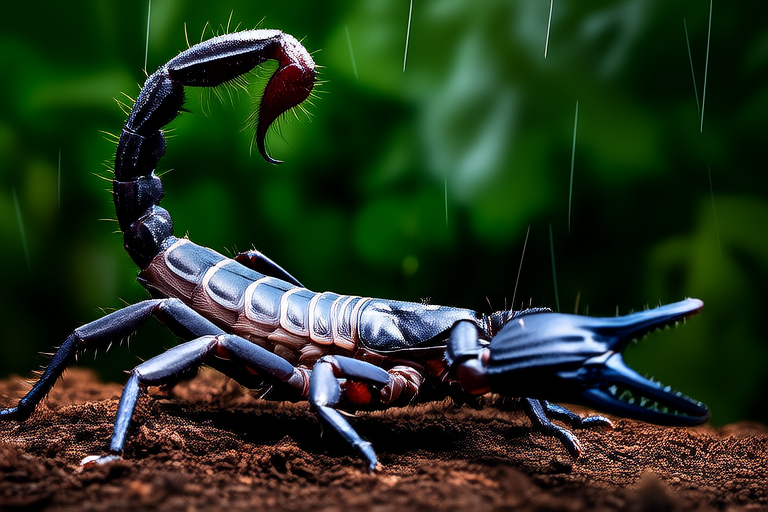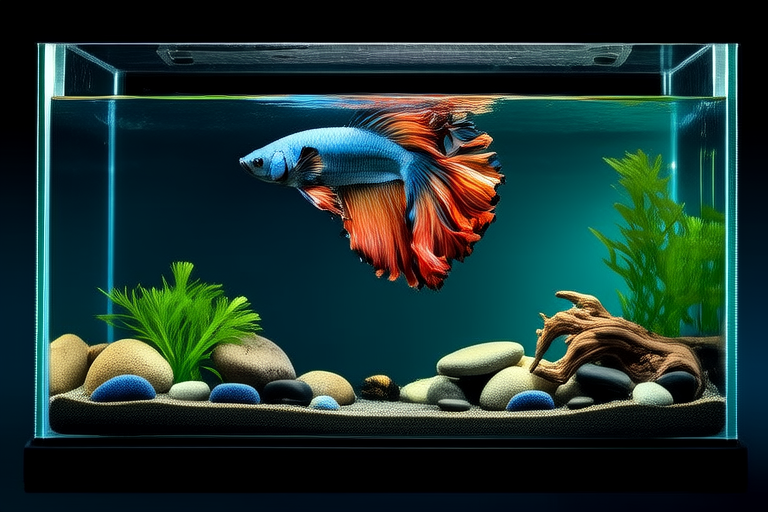
Pet Owner’s Guide: Caring for Your Heterometrus Spinifer – Tips and Tricks You Need to Know
Welcome to your comprehensive guide to caring for the Heterometrus spinifer, commonly known as the Indian ornamental scorpion. This article will provide you with all the necessary information to ensure your pet scorpion thrives in its environment. Whether you’re a first-time owner or have experience with other exotic pets, this guide will offer invaluable insights into the care and maintenance of this fascinating creature.
Habitat Setup
Creating the right habitat for your Heterometrus spinifer is crucial for its well-being. These scorpions are native to tropical regions, so they require a warm and humid environment. Start by choosing an appropriate enclosure, such as a glass tank that’s at least 10 gallons in size. Ensure the tank has a secure lid to prevent escapes.
The substrate should be at least three inches deep, providing enough space for burrowing. Use a mixture of coconut fiber and sand for optimal conditions. Avoid using pine or cedar shavings, as they can be harmful to your scorpion. Add some hiding spots like cork bark or half logs to mimic their natural environment.
Temperature control is essential for your scorpion’s health. Maintain daytime temperatures between 78°F and 86°F (25°C to 30°C), dropping slightly at night to around 72°F to 77°F (22°C to 25°C). A heat mat placed under one side of the tank can help achieve this gradient. Humidity levels should be kept between 60% and 80%. Regular misting helps maintain these levels, but ensure the enclosure dries out somewhat between mistings to prevent mold growth.
Diet Requirements
Feeding your Heterometrus spinifer a balanced diet is vital for its growth and longevity. Insects form the core of their diet, including crickets, mealworms, and dubia roaches. Offer prey items that are no larger than half the width of the scorpion’s body to avoid digestive issues.
Feed adult scorpions once every 7 to 10 days. Juveniles may need more frequent feeding, around twice a week. Dust the insects with a calcium supplement before feeding to support proper skeletal development. Additionally, a multivitamin supplement can be used once a month to ensure your scorpion gets all necessary nutrients.
It’s important to monitor how much food your scorpion consumes and adjust the frequency accordingly. Overfeeding can lead to obesity, while underfeeding can cause malnutrition. Always remove uneaten prey after a few hours to prevent them from biting or stressing your scorpion.
Health Care
Maintaining good health for your Heterometrus spinifer requires regular attention to both its physical and environmental needs. Keep the enclosure clean by spot cleaning daily and performing a full tank cleanup every two to three months. This includes removing all substrate and thoroughly cleaning the tank and accessories with a reptile-safe disinfectant.
Monitor your scorpion for any signs of illness, such as lethargy, loss of appetite, or discoloration. If you notice any concerning symptoms, consult a veterinarian specializing in exotic animals immediately. Regular check-ups are recommended, especially for younger scorpions, to catch any potential issues early.
Parasite prevention is also crucial. Quarantine new additions to your collection for at least a month before introducing them to your established scorpion. This helps prevent the spread of parasites or diseases between animals. Additionally, consider having your scorpion checked for parasites by a vet periodically.
Handling Tips
While Heterometrus spinifers can be handled with care, it’s important to understand that scorpions are not meant to be cuddled pets. Handling should be done infrequently and only when necessary. Always wash your hands before and after handling to avoid transferring oils or chemicals that could stress your scorpion.
When picking up your scorpion, gently scoop it from underneath rather than grabbing it from above. Be mindful of its tail, which contains the stinger. While the venom of this species is generally considered mild, it’s best to avoid unnecessary contact with the stinger. Place the scorpion back into its enclosure carefully, ensuring it lands safely on the substrate.
Remember, each scorpion has its own personality. Some may be more tolerant of handling than others. Pay close attention to your scorpion’s behavior and adjust your handling practices accordingly. If your scorpion becomes agitated or attempts to sting during handling, it’s best to stop and try again another day.
Common Behaviors
Understanding the typical behaviors of your Heterometrus spinifer can help you better care for it. These scorpions are nocturnal, meaning they are most active during the evening and nighttime hours. During the day, they tend to hide in dark, cool areas within their enclosure.
Burrowing is another common behavior, as these scorpions spend much of their time underground in nature. Providing ample substrate and hiding spots encourages this natural behavior. You might notice your scorpion digging into the substrate to create a cozy burrow where it can rest and hide.
Feeding behavior can vary depending on the individual scorpion. Some may be aggressive hunters, actively pursuing prey, while others might prefer to wait in ambush. Watching your scorpion hunt can be an interesting aspect of owning this pet. However, always ensure the prey items are appropriate in size and type to avoid stressing your scorpion.
Conclusion
Owning a Heterometrus spinifer can be a rewarding experience if you provide the right care and attention. By setting up an appropriate habitat, feeding a balanced diet, monitoring health regularly, handling with care, and understanding common behaviors, you’ll ensure your scorpion lives a long and healthy life. Remember, each scorpion is unique, so adapt your care routine based on your pet’s specific needs and preferences.
With patience, dedication, and the knowledge provided in this guide, you’re well on your way to becoming a responsible and informed owner of this captivating species. Enjoy the journey of learning about and caring for your Heterometrus spinifer!




